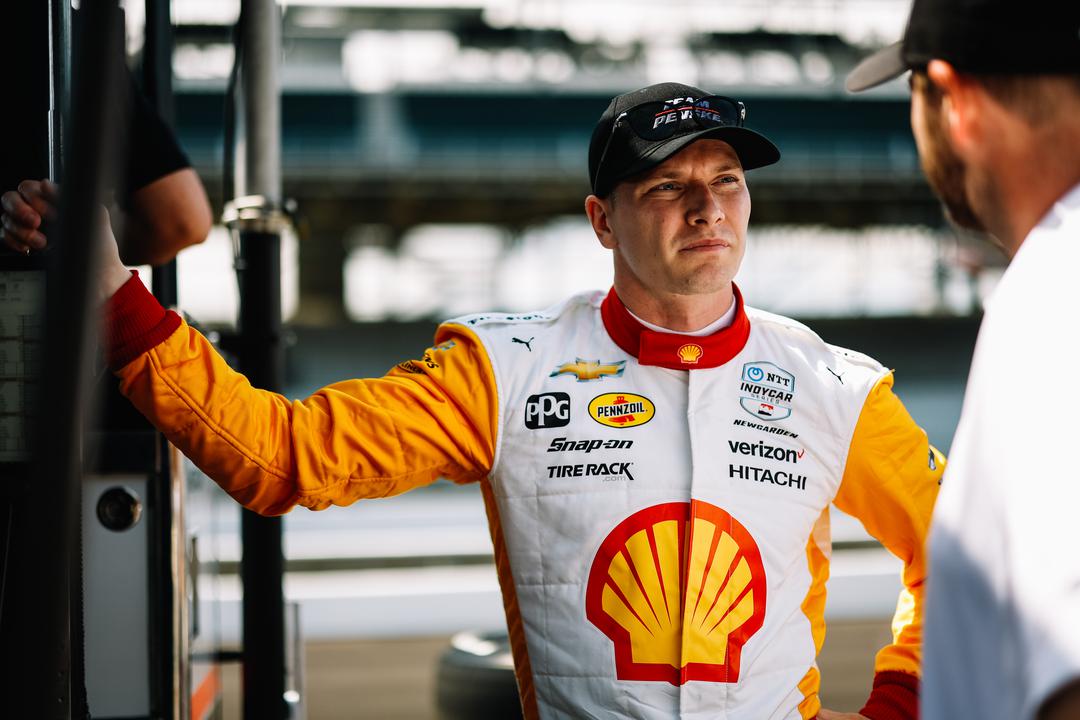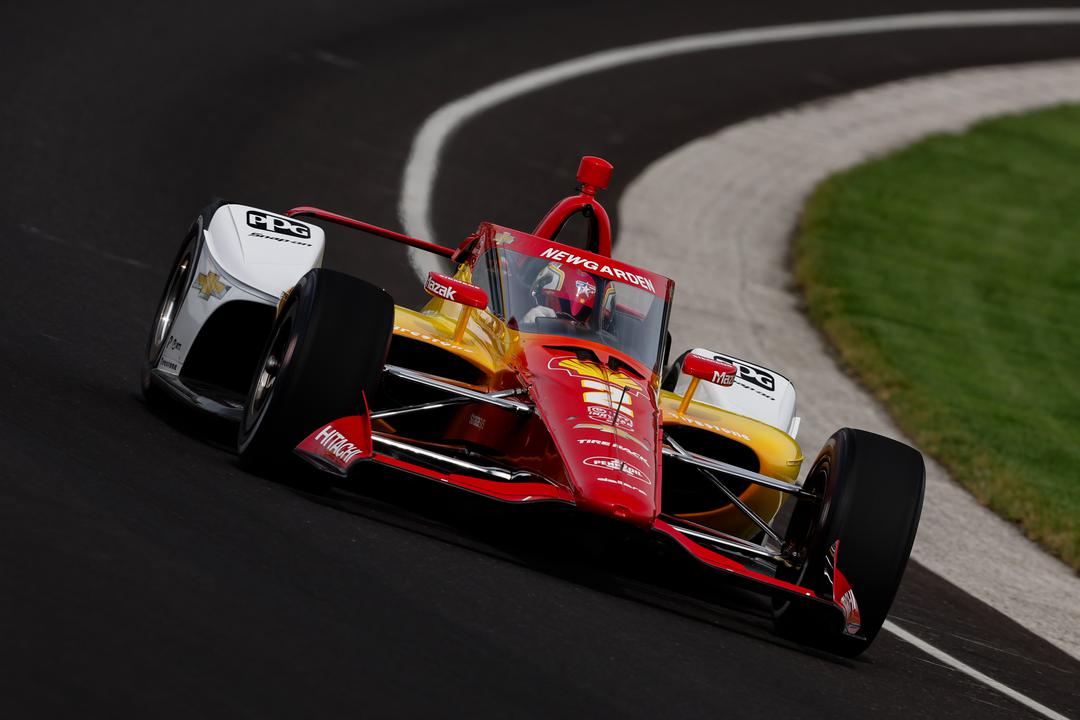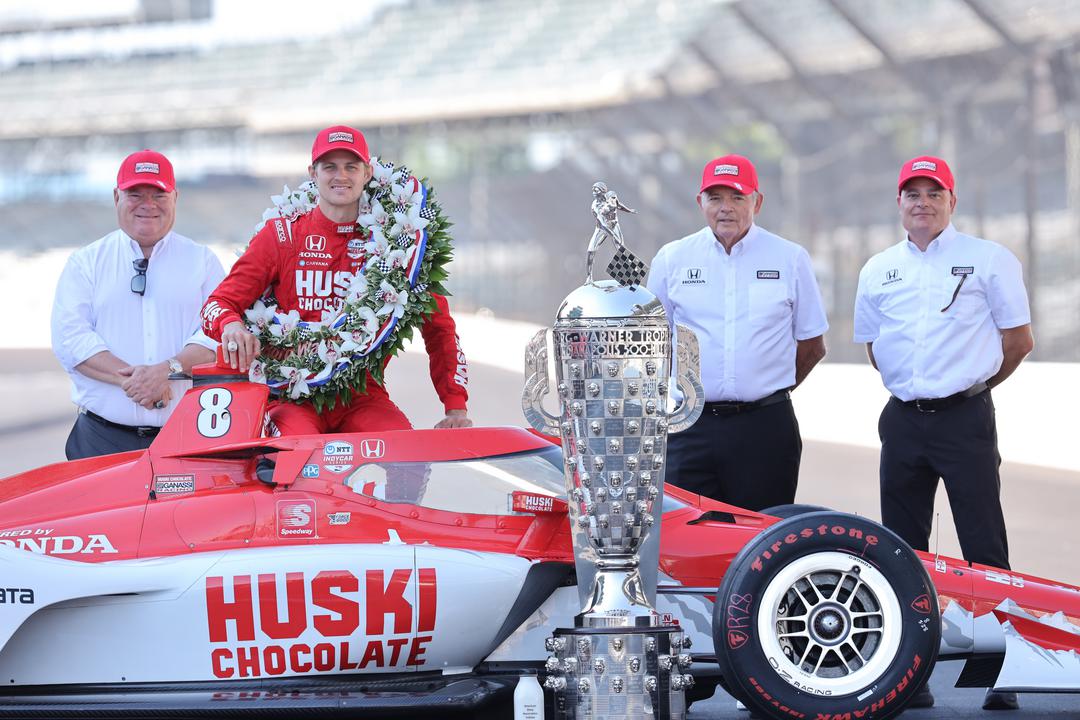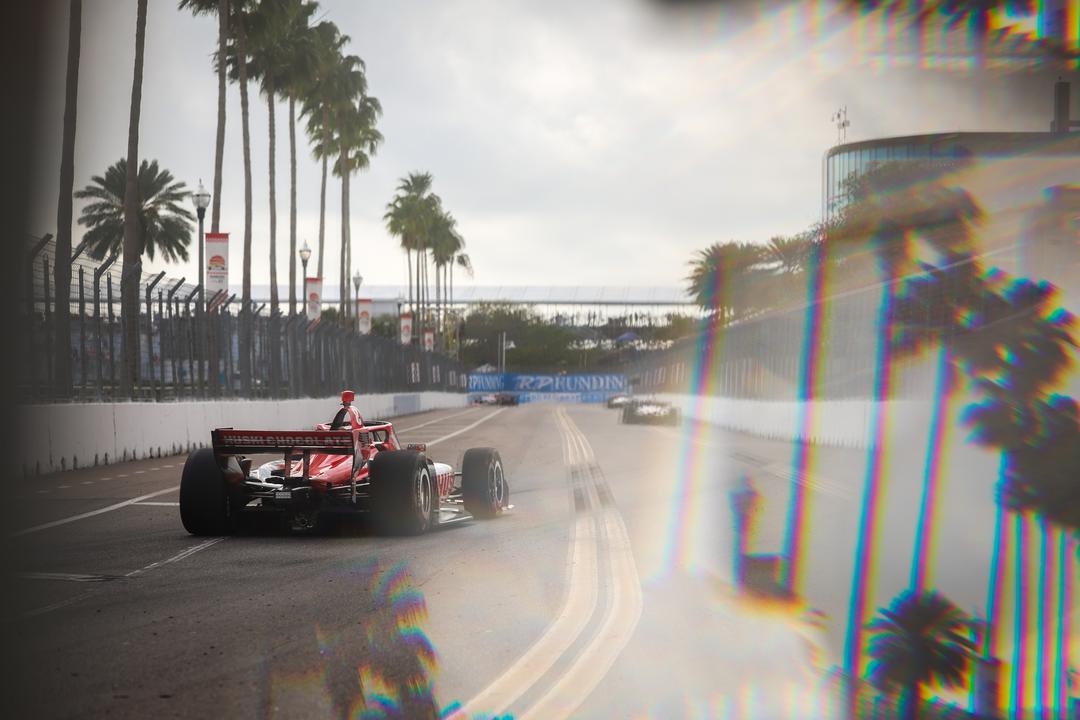until Abu Dhabi Autonomous Racing League

MINOR SPOILERS BELOW FOR THE FIRST EPISODE OF THE 100 DAYS TO INDY DOCUSERIES
“I want to expand our family even more, but I also want him to extract everything he can from his career, too. There will be a point in time where this is not all-consuming and it’s not everything he thinks about. But for right now, it is.”
That was a candid Ashley Newgarden discussing her husband Josef’s commitment to his Penske IndyCar endeavours, during the first episode of IndyCar’s latest documentary series – airing initially in the US only on The CW channel tonight at 9pm ET.
IndyCar’s drivers and teams have totally bought into the fact that this TV series could be the bridge between the disparity in IndyCar’s viewership and the quality and excitement of racing in the series.
If this documentary continues along the path of episode one, it should do a great job in introducing the series to a new audience.
Ashley Newgarden’s honesty is the perfect display of what this series can offer. While Drive to Survive does visit drivers’ homes and shoots on location with them, it often feels scripted and you rarely get the insight into the driver’s life off-track short of a montage of them playing tennis or golf.
It's finally here.
Check out all the ways to watch '100 Days to Indy'.@TheCW app: https://t.co/24rRZBPsac#INDYCAR // #100DaysToIndy pic.twitter.com/4Llp07RyWz
— NTT INDYCAR SERIES (@IndyCar) April 26, 2023
Already, from the very first minutes of 100 Days to Indy, you’re getting that behind-the-scenes insight and access that you suspect the prestige and guarded brand values of F1 wouldn’t allow.
The Race received an advanced screening of the episode airing tonight. Here’s what we thought:
This is a lifestyle series

We knew that from the moment this series was announced, it wasn’t targeting IndyCar fans but rather the uninitiated.
That means this series has to toe that line between providing a fun and entertaining introduction to the series without boring the initiated die-hard fans to death in the process, or offending them with a lack of detail or, dare we even bring it up, engine noises not matching what’s on screen.
And while the episode is a bit lacking in the punch of the on-track action and onboard footage you may want to see, as regular viewers we see plenty of that on Sundays – and taking advantage of the off-track access to drivers is the most important aspect.
Immediately – while the clips of Newgarden training in his home gym with his top off are enough to make even the most sculpted weight-lifter feel self-conscious – we’re inside his family home with his newborn son Kota and wife Ashley.
As well as Ashley’s admission about family future, we’re introduced to ‘fun dad Newgarden’, who gives a fascinating insight into what is a normal experience for some – having a child – but doing that as an athlete in a dangerous, 200mph sport and the difficult dilemmas that come with that.

Not only is it a great way to give the audience something to identify with in Newgarden, but it also feels like a very modern representation of the ‘American dream’ – the attractive couple with the baby and the beautiful house.
The producers have learned about IndyCar very quickly
The crew producing the show are new to IndyCar – even if producer Brian Terry’s mum grew up in Indianapolis, Emmy Award-winning director Patrick Dimon leads a team still learning on the job about the series.
It’s a tough task as they will have to cut and edit episodes on the fly as they go between now and the Thursday after the Indy 500 when the last of six episodes airs.
Episode schedule, 100 Days to Indy on The CW
Episode 1 – 9pm ET, April 26
Episode 2 – 9pm ET, May 4
Episode 3 – 9pm ET, May 11
Episode 4 – 9pm ET, May 18
Episode 5 – 9pm ET, May 25
Episode 6 – 9pm ET, June 8
It’s clear from the word go that – as well as just delivering a beautifully-shot and -scored episode – the team understands many of the nuances in front of them.
As soon as we’ve left Newgarden, we’re introduced to Scott McLaughlin and Marcus Ericsson. Both come from thousands of miles away, McLaughlin driving for Penske in an premium seat and Ericsson winning the Indy 500.

Foreign drivers in the IndyCar Series have long been part of the fabric of the championship, and charting two drivers from abroad is really important.
McLaughlin’s given more time to shine in this episode and while sat around a barbecue with his parents-in-law and his wife Carly, he describes how important it is to have a family at the track when his own parents are at home in New Zealand.
There’s more personal insight into how Carly and Scott met, and how he had to win over the parents.
We’re also treated to some behind-the-scenes filming of McLaughlin and Newgarden’s YouTube series Bus Bros and we’re introduced to the notion that there are strong friendships off-track in IndyCar.
But on-track the drivers are hellbent on beating each other and that feels like an underlying theme the directors are teeing up to explore in the future.
The racing action at St Pete – as well as a bit of a sterling introduction to IndyCar via James Hinchcliffe, a much less meme-worthy narrator than Will Buxton is for Drive to Survive, at the Thermal pre-season test – will offer little new to existing IndyCar fans, but there is unseen footage from before St Pete that we won’t elaborate on to avoid spoilers at the request of the series.
One of the more interesting at-the-track scenes is in a motorhome with Carly McLaughlin and Ashley Newgarden watching the race with family, as they show the off-track implications of how these drivers perform on the track.
Now the challenge is attracting interest in the show
Having a big network like The CW and Vice is a good chance for IndyCar to get this series out there. Of course, there’s worry about fatigue surrounding sports documentaries, and of course, something like Netflix might have been a bigger platform to appear on.
But this is an excellent first episode produced without the budget of Drive to Survive – IndyCar hasn’t paid for this documentary, but has input in the final cut – and for potentially a slightly different audience.

The next big task is finalising international dates as the series is only premiering in the US on April 26.
The Race understands this is not a new process, for US TV shows to gather momentum Stateside before being rolled out internationally, and with Vice, broadcasting internationally certainly shouldn’t be a problem.
It’s less than ideal to have to stagger the roll-out abroad, especially when many countries will want to see their own star driver featured, but The Race understands broadcasting in those countries is high on the agenda of next steps.
It’s hard to set out what success would look like for the series, but it succeeded with the first task of any documentary of its kind. It produced a fantastic insight into a championship and presented it in an understandable and identifiable way, bringing something totally new to the table.
There’s some fantastic characters in the series – no doubt Pato O’Ward will feature heavily in the next episode surrounding his home race at Texas – and it’s clear that 100 Days to Indy is not going to waste any of the fantastic access it has.
The teams and drivers deserve credit for buying into this, and the Newgardens especially for showing a vulnerability you rarely see in these types of series.
But most of all, the uninitiated team producing the series could have got this very wrong given a lack of knowledge of the championship, and the fact they are cutting and editing footage on the go ‘as live’, whereas many other series work in a review format well after the fact.
It might be the ‘as live’ nature that gives it a really palpable tension and fast-paced feel, too.
And ultimately it is the producers’ lack of pre-existing IndyCar knowledge that might have been their biggest strength in bringing the championship to new households.




